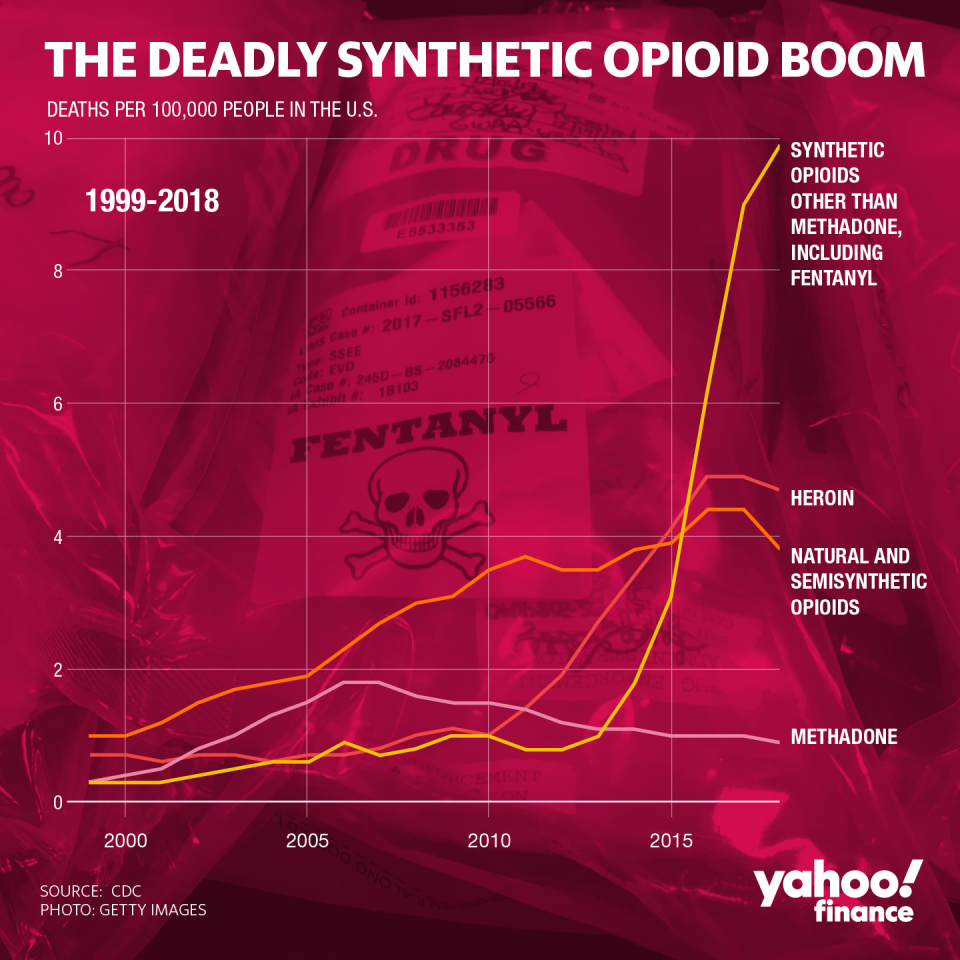This post was originally published on this site
Addiction Recovery Bulletin
A working paper published by the National Bureau of Economic Research (NBER) argues that the decades-long U.S. opioid crisis is “a unique product of specific policies and features of the U.S. health care market” that remain in effect.
“Without the opioid epidemic, American life expectancy would not have declined in recent years,” the paper stated. “In turn, the epidemic was sparked by the development and marketing of a new generation of prescription opioids and provider behavior [that] is still helping to drive it.”
In December 1995, the FDA approved a new opioid known as Oxycodone. Subsequently, according to the National Institute on Drug Abuse (NIDA), “pharmaceutical companies reassured the medical community that patients would not become addicted to prescription opioid pain relievers, and health care providers began to prescribe them at greater rates.” A blizzard of prescriptions followed.
An estimated 21-29% of patients who are prescribed opioids for chronic pain end up misusing them, according to NIDA, while 8-12% develop an opioid use disorder.
Tens of millions of Americans became addicted to prescription opioids and tens of thousands died of overdoes in the two decades that followed. In recent years, the overdose crisis accelerated after synthetic opioids like fentanyl began flooding the U.S.
A lot of the problem has to do with regulation’
The pharmaceutical industry’s opportunism — enabled by the backing of politicians and federal regulators — along with the emerging medical consensus that opioids were highly effective for pain management, led to opioids taking hold in American society.
Furthermore, money pouring in from Big Pharma and a green light from D.C. provided American doctors with a financial incentive to prescribe more opioids.
“People have blamed all sorts of things, heroin from Mexico and fentanyl from China and economic decline and so on and so forth,” Dr. Janet Currie, a professor of economics and public affairs at Princeton University and one of the co-authors of the paper, told Yahoo Finance. “But really the issue is that a whole lot of people got addicted because they were prescribed pain medications which aren’t prescribed in the same way in other countries. They’re much more controlled.”
Opioids are prescribed and abused in the U.S. at a significantly higher rate than any other country.
“If you recognize that a lot of the problem has to do with regulation… most other countries, when they do allow opioid prescription, they don’t know how high doses of opioid prescriptions are but we do,” Currie said. “Most other countries don’t allow advertising medications direct-to-consumers but we do. There’s a whole list of things like that which have made things worse.”
‘The economic impact is also quite substantial’
Some research indicates a strong correlation between workforce participation and overdose rates. And last year, while testifying before the House Financial Services Committee, Federal Reserve Chair Jerome Powell spoke of adverse effects on the workforce.
